| Listing 1 - 10 of 66 | << page >> |
Sort by
|
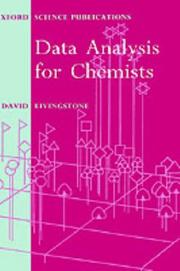
ISBN: 0198557280 9780198557289 Year: 1995 Publisher: Oxford: Oxford university press,
Abstract | Keywords | Export | Availability | Bookmark
 Loading...
Loading...Choose an application
- Reference Manager
- EndNote
- RefWorks (Direct export to RefWorks)
Book
ISBN: 9781420070996 1420070991 Year: 2010 Publisher: Boca Raton: CRC,
Abstract | Keywords | Export | Availability | Bookmark
 Loading...
Loading...Choose an application
- Reference Manager
- EndNote
- RefWorks (Direct export to RefWorks)
Drugs --- QSAR (Biochemistry) --- Drugs
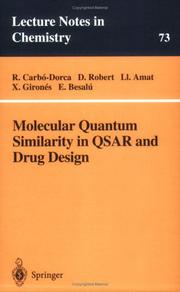
ISBN: 3540675817 9783540675815 Year: 2000 Publisher: Berlin: Springer,
Abstract | Keywords | Export | Availability | Bookmark
 Loading...
Loading...Choose an application
- Reference Manager
- EndNote
- RefWorks (Direct export to RefWorks)
Drugs --- QSAR (Biochemistry). --- Quantum biochemistry. --- Quantum pharmacology. --- Design. --- QSAR (Biochemistry)
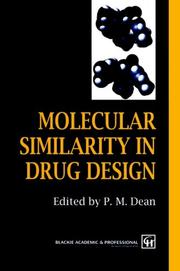
ISBN: 0751402214 9780751402216 Year: 1995 Publisher: London: Blackie,
Abstract | Keywords | Export | Availability | Bookmark
 Loading...
Loading...Choose an application
- Reference Manager
- EndNote
- RefWorks (Direct export to RefWorks)
Drugs --- QSAR (Biochemistry). --- Design --- Computer simulation. --- QSAR (Biochemistry)
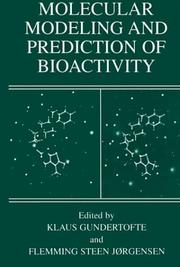
ISBN: 0306462176 Year: 2000 Publisher: New York Kluwer Academic/Plenum
Abstract | Keywords | Export | Availability | Bookmark
 Loading...
Loading...Choose an application
- Reference Manager
- EndNote
- RefWorks (Direct export to RefWorks)
Biomolecules --- Drugs --- QSAR (Biochemistry) --- Computer simulation --- Design
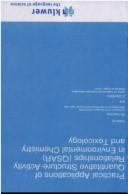
ISBN: 0792308271 Year: 1990 Publisher: Dordrecht ; Boston ; London, Kluwer Academic Publishers,
Abstract | Keywords | Export | Availability | Bookmark
 Loading...
Loading...Choose an application
- Reference Manager
- EndNote
- RefWorks (Direct export to RefWorks)
Don de Jean-Pierre Contzen
Environmental chemistry --- Pollutants --- QSAR (Biochemistry) --- Technique --- Structure-activity relationships
Multi
ISBN: 9781483266893 1483266893 9780120133222 0120133229 Year: 1992 Publisher: London, England ; San Diego, California : Academic Press,
Abstract | Keywords | Export | Availability | Bookmark
 Loading...
Loading...Choose an application
- Reference Manager
- EndNote
- RefWorks (Direct export to RefWorks)
Advances in Drug Research, Volume 22 focuses on the concepts and facts of drug research. This book is divided into four chapters. Chapter 1 discusses the use of atomic properties and atom-centered indices in QSAR models, while Chapter 2 describes the pharmacokinetics of peptides and proteins. The nuclear receptors, emphasizing the aspects of molecular and genomic pharmacology are elaborated in Chapter 3. The last chapter covers the medicinal chemistry of a vast group of agents acting on nuclear receptors. This publication is valuable to drug researchers and students interested in advances in d
Drugs --- Research. --- STEROIDS --- CHEMISTRY --- QSAR --- DRUG QSAR PROBLEMS --- PEPTIDES --- PHARMACOKINETICS --- PROTEINS --- GENOMIC PHARMACOLOGY --- MEMBRANAL RECEPTORS --- PHARMACOLOGY --- NUCLEAR RECEPTORS
Book
ISBN: 0120133229 1322280037 1483266893 9781483266893 9780120133222 Year: 1992 Publisher: [Place of publication not identified]
Abstract | Keywords | Export | Availability | Bookmark
 Loading...
Loading...Choose an application
- Reference Manager
- EndNote
- RefWorks (Direct export to RefWorks)
Advances in Drug Research, Volume 22 focuses on the concepts and facts of drug research. This book is divided into four chapters. Chapter 1 discusses the use of atomic properties and atom-centered indices in QSAR models, while Chapter 2 describes the pharmacokinetics of peptides and proteins. The nuclear receptors, emphasizing the aspects of molecular and genomic pharmacology are elaborated in Chapter 3. The last chapter covers the medicinal chemistry of a vast group of agents acting on nuclear receptors. This publication is valuable to drug researchers and students interested in advances in d
Drugs --- Pharmaceutical research --- Pharmacology --- Research. --- Research --- STEROIDS --- CHEMISTRY --- QSAR --- DRUG QSAR PROBLEMS --- PEPTIDES --- PHARMACOKINETICS --- PROTEINS --- GENOMIC PHARMACOLOGY --- MEMBRANAL RECEPTORS --- PHARMACOLOGY --- NUCLEAR RECEPTORS
Book
Abstract | Keywords | Export | Availability | Bookmark
 Loading...
Loading...Choose an application
- Reference Manager
- EndNote
- RefWorks (Direct export to RefWorks)
Tens of thousands of chemicals are released into the environment every day. High-throughput screening (HTS) has offered a more efficient and cost-effective alternative to traditional toxicity tests that can profile these chemicals for potential adverse effects with the aim to prioritize a manageable number for more in depth testing and to provide clues to mechanism of toxicity. The Tox21 program, a collaboration between the National Institute of Environmental Health Sciences (NIEHS)/National Toxicology Program (NTP), the U.S. Environmental Protection Agency’s (EPA) National Center for Computational Toxicology (NCCT), the National Institutes of Health (NIH) National Center for Advancing Translational Sciences (NCATS), and the U.S. Food and Drug Administration (FDA), has generated quantitative high-throughput screening (qHTS) data on a library of 10K compounds, including environmental chemicals and drugs, against a panel of nuclear receptor and stress response pathway assays during its production phase (phase II). The Tox21 Challenge, a worldwide modeling competition, was launched that asks a “crowd” of researchers to use these data to elucidate the extent to which the interference of biochemical and cellular pathways by compounds can be inferred from chemical structure data. In the Challenge participants were asked to model twelve assays related to nuclear receptor and stress response pathways using the data generated against the Tox21 10K compound library as the training set. The computational models built within this Challenge are expected to improve the community’s ability to prioritize novel chemicals with respect to potential concern to human health. This research topic presents the resulting computational models with good predictive performance from this Challenge.
stress response --- predictive model --- QSAR --- HTS --- nuclear receptor --- in vitro assay --- Tox21 --- stress response --- predictive model --- QSAR --- HTS --- nuclear receptor --- in vitro assay --- Tox21
Book
ISBN: 1608053792 9781608053797 9781608054336 Year: 2012 Publisher: [Oak Park, Ill.] Bentham eBooks
Abstract | Keywords | Export | Availability | Bookmark
 Loading...
Loading...Choose an application
- Reference Manager
- EndNote
- RefWorks (Direct export to RefWorks)
This volume offers an overview on the latest advancements in in QSAR research, providing readers with an impression of recent inclinations and advances in different aspects of the QSAR strategies, such as descriptors, methods of modeling and validation.
| Listing 1 - 10 of 66 | << page >> |
Sort by
|

 Search
Search Feedback
Feedback About UniCat
About UniCat  Help
Help News
News